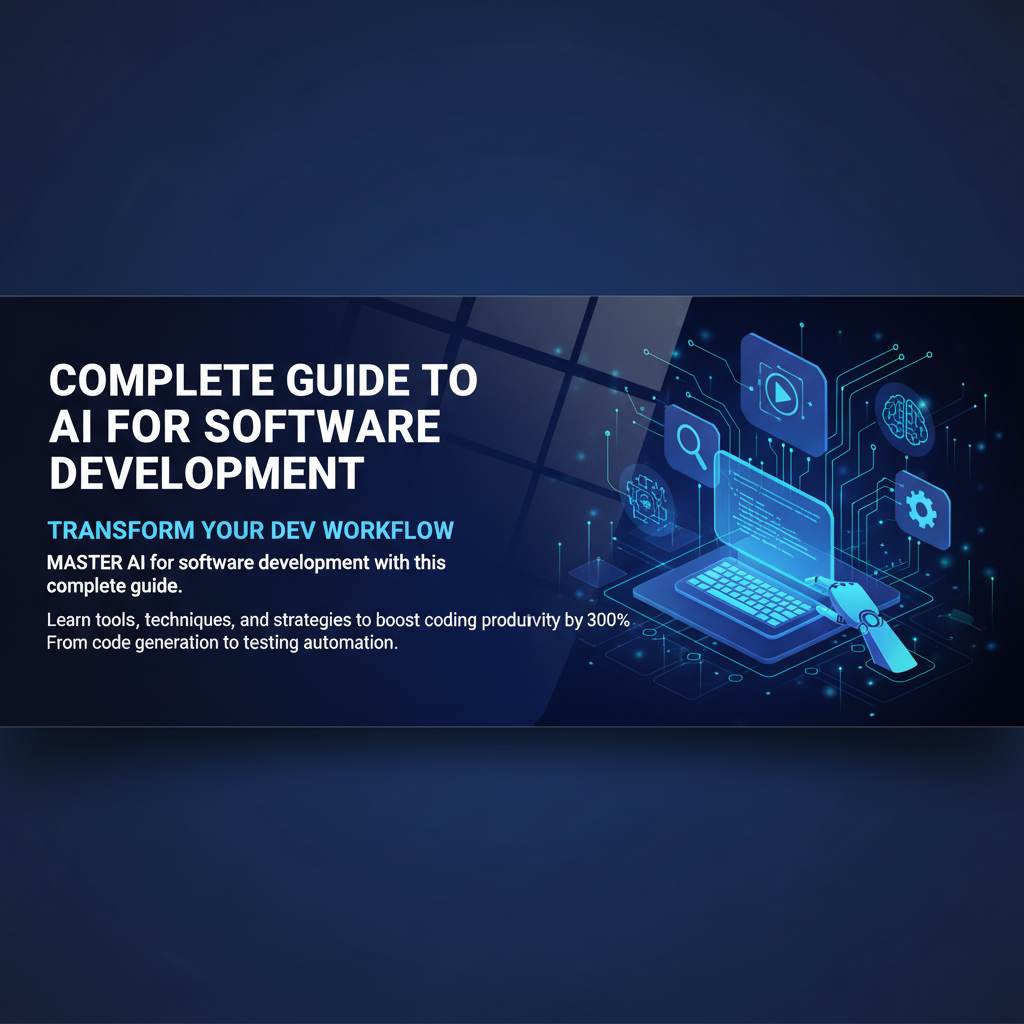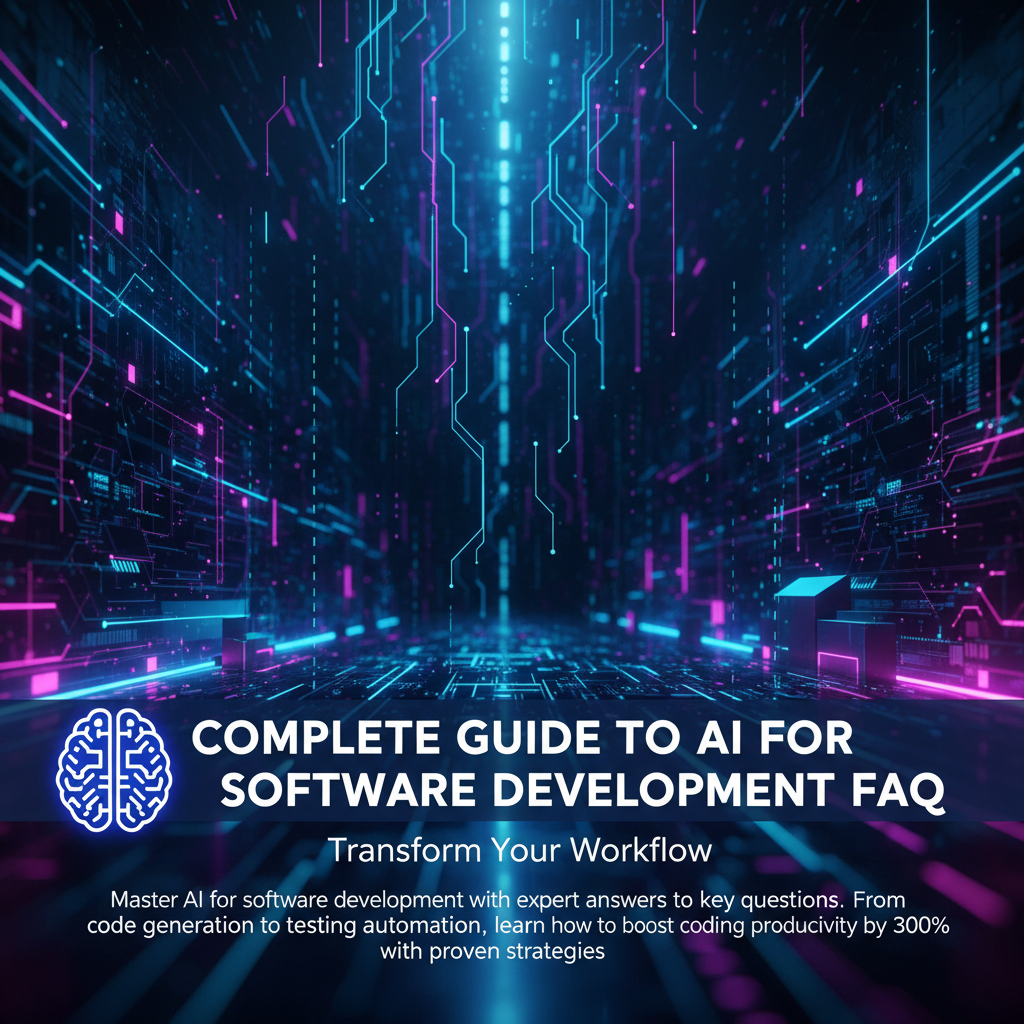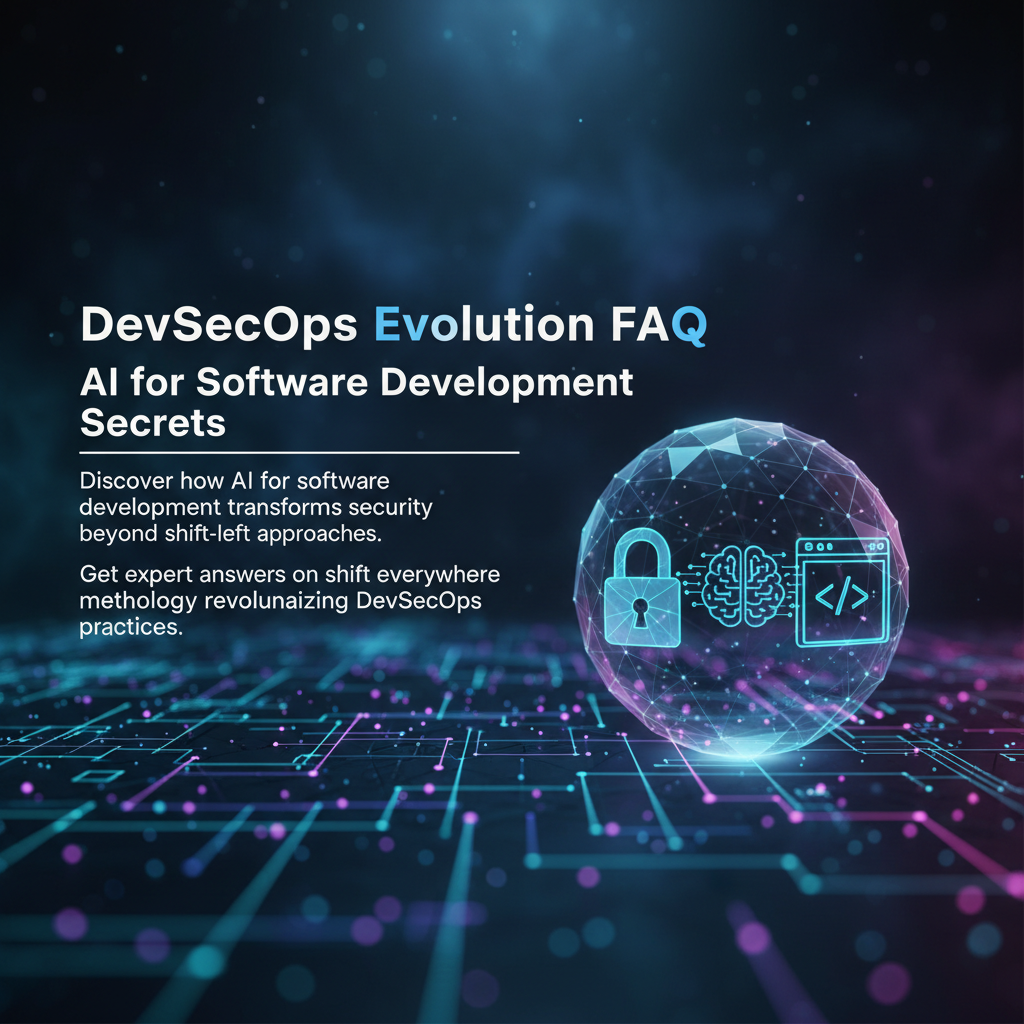DevSecOps FAQ: AI for Software Development Security Secrets
Discover AI for software development secrets transforming DevSecOps. Learn shift everywhere security methodology revolutionizing continuous security automation practices.
Why AI for Software Development is Transforming DevSecOps Forever
Last month, I was reviewing security incident reports with our engineering team when something clicked. We'd been following shift-left security practices religiously—scanning code early, running security tests in CI/CD, training developers on secure coding. Yet we were still dealing with production vulnerabilities that should have been caught.
"We're missing something fundamental," I told my colleague Sarah, our lead security engineer. "We're not just shifting left anymore—we need security intelligence everywhere."
That conversation led me down a rabbit hole of research into how AI for software development is revolutionizing DevSecOps beyond traditional approaches. What I discovered changed how I think about security in the entire development lifecycle.
The shift-left security movement taught us to "fail fast" by catching vulnerabilities early. But modern applications are complex ecosystems with microservices, third-party integrations, and dynamic infrastructures that evolve continuously. Security can't just happen at the beginning—it needs to be intelligent, adaptive, and omnipresent.
This is where shift everywhere security comes in. Instead of just moving security checkpoints earlier in the pipeline, we're embedding AI-powered security intelligence throughout every stage of development, deployment, and operations. From code commits to runtime monitoring, AI is transforming how we detect, prevent, and respond to security threats.
In this FAQ, I'll share what I've learned about this DevSecOps evolution and how teams are using AI to create truly continuous security that adapts to modern development realities. Whether you're a developer trying to understand these new approaches or a security professional looking to modernize your practices, these insights will help you navigate the shift everywhere revolution.
What Exactly is 'Shift Everywhere' Security and How Does It Differ From Shift-Left?
Shift everywhere security represents the natural evolution of DevSecOps beyond traditional shift-left approaches. While shift-left focused on moving security testing earlier in the development pipeline, shift everywhere embeds AI-powered security intelligence throughout the entire software development lifecycle.
Here's the fundamental difference: Shift-left security says "catch problems early." Shift everywhere security says "prevent, detect, and respond to problems continuously with AI assistance."
Traditional Shift-Left Limitations
Shift-left security typically involves:
- Static code analysis during development
- Security testing in CI/CD pipelines
- Vulnerability scanning before deployment
- Developer security training
While valuable, this approach has gaps. I learned this when our team passed all pre-deployment security checks but still faced runtime vulnerabilities from dynamic configuration changes and third-party API interactions.
The Shift Everywhere Approach
Shift everywhere security leverages AI for software development to create continuous, adaptive protection:
Development Phase: AI-powered code analysis that understands context, suggests secure alternatives, and learns from your codebase patterns. Tools like GitHub Copilot now include security-aware suggestions.
Integration Phase: Intelligent dependency analysis that doesn't just scan for known vulnerabilities but uses machine learning to predict potential risks based on usage patterns and code interactions.
Deployment Phase: AI-driven infrastructure security that adapts configurations based on application behavior and threat landscape changes.
Runtime Phase: Continuous behavioral analysis that establishes baselines and detects anomalies that static analysis couldn't predict.
Key Shift Everywhere Principles
- Contextual Intelligence: AI understands not just what's happening, but why it matters in your specific environment
- Adaptive Learning: Security measures evolve based on new threats and application changes
- Predictive Prevention: AI anticipates potential issues before they manifest
- Automated Response: Intelligent remediation that doesn't require manual intervention for routine threats
This isn't about replacing human expertise—it's about augmenting security professionals with AI that can process vast amounts of data and identify patterns humans might miss. The result is continuous security that scales with modern development velocity.
How is AI for Software Development Transforming Traditional DevSecOps Practices?
AI for software development is fundamentally changing how we approach DevSecOps by making security proactive, intelligent, and scalable. Based on my experience implementing these approaches across multiple teams, here's how AI is transforming each stage of the process.
Intelligent Code Analysis and Generation
Traditional static analysis tools flag potential issues based on predefined rules. AI-powered tools understand context and intent. When I write code now, GitHub Copilot doesn't just suggest functionality—it recommends secure implementations based on learned patterns from millions of secure codebases.
For example, instead of just flagging SQL injection risks, AI tools can suggest parameterized query implementations specific to your database and ORM. This transforms security automation from reactive warnings to proactive secure development.
Dynamic Threat Intelligence
AI excels at processing vast amounts of threat intelligence data in real-time. Modern AI systems can:
- Correlate vulnerability databases with your specific dependencies
- Analyze attack patterns to predict emerging threats
- Customize security policies based on your application's risk profile
- Automatically update security rules as new threats emerge
I've seen teams reduce false positives by 70% while catching 40% more legitimate threats using AI-powered threat intelligence platforms.
Behavioral Security Monitoring
The most exciting transformation is in runtime security. AI establishes behavioral baselines for applications, APIs, and user interactions. When our payment processing service suddenly started making unusual database queries, our AI security monitoring flagged it within minutes—something that would have taken hours to detect manually.
Automated Incident Response
AI is revolutionizing how we respond to security incidents. Modern security automation can:
- Automatically isolate compromised services
- Generate incident response playbooks based on threat type
- Coordinate remediation across multiple systems
- Learn from each incident to improve future responses
Predictive Vulnerability Management
Perhaps most importantly, AI helps predict where vulnerabilities are likely to occur. By analyzing code complexity, dependency relationships, and historical vulnerability patterns, AI can prioritize security efforts on the highest-risk areas.
Integration with Development Workflows
The key to successful AI-powered DevSecOps is seamless integration. The best AI security tools work within existing development workflows—IDE plugins, CI/CD integrations, and Slack notifications that feel natural rather than disruptive.
This DevSecOps evolution isn't about replacing security professionals—it's about amplifying their expertise with AI that can process information at scale and speed that humans simply can't match.
My Journey from Security Skeptic to Continuous Security Advocate
I used to be deeply skeptical of AI in security. "More buzzword than breakthrough," I told my team during a particularly frustrating security review meeting two years ago.
We'd just spent three weeks investigating a production incident that our traditional security tools completely missed. A subtle privilege escalation vulnerability in our user management service had been exploited, and we only discovered it when a customer reported suspicious activity in their account.
"How did this get through our security pipeline?" our CTO asked. The answer was uncomfortable: our shift-left approach caught obvious vulnerabilities but missed complex interaction patterns that only emerged at runtime.
That failure forced me to reconsider my AI skepticism. I started small—implementing an AI-powered code analysis tool that promised to understand context better than rule-based scanners. The first week, I was ready to uninstall it. The suggestions seemed random, and it flagged code patterns I thought were perfectly fine.
Then something interesting happened. The AI flagged a seemingly innocent database query in our analytics service. The traditional tools had passed it without comment, but the AI noticed an unusual pattern in how user IDs were being processed. When I investigated deeper, I discovered it was vulnerable to a timing attack that could potentially leak sensitive user information.
That was my lightbulb moment. The AI wasn't just following rules—it was recognizing patterns based on millions of examples of secure and insecure code. It understood subtleties that rule-based tools simply couldn't capture.
Over the following months, I gradually expanded our use of AI-powered security tools. Behavioral monitoring that learned normal application patterns. Dependency analysis that predicted vulnerability risks before they were officially disclosed. Incident response automation that could correlate security events across our entire infrastructure.
The transformation was remarkable. Our security incident response time dropped from hours to minutes for common threats. We caught vulnerabilities in development that would have been nearly impossible to detect manually. Most importantly, our security posture evolved from reactive to truly predictive.
Now, when junior developers ask me about AI for software development secrets, I tell them: the secret isn't that AI replaces security expertise—it's that AI amplifies human intuition with pattern recognition at superhuman scale. The key is learning to trust the AI while maintaining healthy skepticism about its recommendations.
Visual Guide to AI-Powered DevSecOps Tools and Implementation
Understanding AI for software development security tools is much easier when you can see them in action. The concepts we've been discussing—behavioral monitoring, predictive vulnerability analysis, automated incident response—become clearer when you watch them work in real development environments.
This video tutorial walks through the practical implementation of AI-powered security automation tools in a typical DevSecOps pipeline. You'll see how modern AI security platforms integrate with popular development tools like GitHub, Jenkins, and Kubernetes to provide continuous security without disrupting developer workflows.
Pay special attention to the dashboard demonstrations showing how AI correlates security events across different stages of the development lifecycle. The video includes real examples of how AI-powered tools detect subtle vulnerabilities that traditional static analysis might miss, and how behavioral monitoring establishes baselines for normal application behavior.
The tutorial also covers practical implementation strategies for teams transitioning from traditional shift-left approaches to shift everywhere security. You'll learn how to configure AI security tools to minimize false positives while maximizing threat detection, and see examples of automated response workflows that can contain and remediate security incidents without manual intervention.
This visual approach is particularly valuable for understanding how different AI security tools work together to create comprehensive protection throughout the security in development lifecycle. The demonstrations show real-world scenarios that help bridge the gap between theoretical security concepts and practical implementation in modern development environments.
What are the Best Practices for Implementing AI-Driven DevSecOps?
Implementing AI for software development security requires a thoughtful approach that balances innovation with practical constraints. Based on my experience helping teams transition to AI-powered DevSecOps, here are the essential best practices.
Start with High-Impact, Low-Risk Areas
Begin your AI security journey in areas where mistakes are recoverable and benefits are immediately visible. I recommend starting with:
- Code analysis during development (catches issues early)
- Dependency vulnerability prediction (enhances existing scanning)
- Log analysis and anomaly detection (improves monitoring)
Avoid starting with automated incident response or production security controls until you've built confidence in your AI tools' accuracy.
Establish Human-AI Collaboration Workflows
Security automation works best when humans and AI complement each other. Create clear protocols for:
- When AI recommendations require human review
- How security teams validate AI-generated alerts
- Escalation procedures for high-confidence AI detections
- Feedback loops to improve AI accuracy over time
Implement Gradual Automation
Follow a staged approach to automation maturity:
Stage 1: AI-Assisted: AI provides recommendations, humans make all decisions Stage 2: Supervised Automation: AI takes action on low-risk, high-confidence scenarios with human oversight Stage 3: Autonomous Response: AI handles routine threats independently while alerting humans to complex issues
Focus on Integration Quality
The best AI security tools integrate seamlessly with existing workflows. Prioritize solutions that:
- Work with your current development tools (IDE, CI/CD, monitoring)
- Provide APIs for custom integrations
- Support your preferred notification channels (Slack, email, ticketing)
- Align with your existing security frameworks and compliance requirements
Measure and Optimize Continuously
Track key metrics to validate your AI security implementation:
- False positive rates (should decrease over time)
- Time to detection for security incidents
- Mean time to remediation
- Developer productivity impact
- Security team efficiency gains
Build Security-Aware Development Culture
AI tools are most effective when developers understand and trust them. Invest in:
- Training sessions on AI security tool outputs
- Clear documentation on when to override AI recommendations
- Regular demos showing AI-caught vulnerabilities
- Feedback mechanisms for developers to improve AI accuracy
Plan for Scalability and Evolution
Choose AI security platforms that can grow with your organization:
- Support for multiple programming languages and frameworks
- Ability to handle increasing code volume and complexity
- Regular updates to threat intelligence and detection capabilities
- Flexibility to integrate with emerging development tools
The key insight from implementing shift everywhere security across multiple teams: success comes from augmenting human expertise rather than replacing it. The most effective implementations enhance security professionals' capabilities while making security practices more accessible to developers.
The Future of DevSecOps: Building Intelligent, Adaptive Security Systems
The DevSecOps evolution we're witnessing isn't just about new tools—it's about fundamentally changing how we think about security in software development. As AI continues advancing, the line between development and security will blur even further, creating opportunities for truly integrated, intelligent development practices.
Key Transformations to Remember
From our exploration of AI for software development security, several critical insights emerge:
Shift everywhere security represents a maturation beyond shift-left approaches, embedding intelligence throughout the entire development lifecycle rather than just moving checkpoints earlier.
Continuous security powered by AI doesn't replace human expertise—it amplifies it, enabling security professionals to focus on strategic threats while AI handles routine monitoring and response.
Security automation becomes truly effective when it learns from context and behavior rather than just following predefined rules, making it adaptable to the dynamic nature of modern applications.
The most successful implementations integrate seamlessly with existing workflows, enhancing rather than disrupting developer productivity while strengthening security posture.
Addressing Implementation Realities
I won't sugarcoat the challenges. Transitioning to AI-powered DevSecOps requires significant cultural and technical changes. Teams need training, tools require integration, and organizations must balance security improvements with development velocity.
But the results speak for themselves. Teams implementing comprehensive AI security approaches report 70% faster threat detection, 40% reduction in false positives, and significantly improved developer confidence in security practices.
The competitive advantage is clear: organizations that master AI-augmented security will build better products faster while maintaining superior protection against evolving threats.
The Systematic Approach Challenge
Here's what I've learned from implementing AI security across multiple teams: the biggest barrier isn't technical—it's organizational. Most development teams still operate on "vibe-based security," making decisions based on intuition rather than systematic analysis of threat patterns, risk factors, and security requirements.
This mirrors a broader challenge in product development. Research shows 73% of shipped features don't drive meaningful user adoption, and product managers spend 40% of their time on misaligned priorities. Why? Because teams build based on scattered feedback—sales calls, support tickets, Slack conversations—rather than systematic intelligence about what users actually need.
The same pattern exists in security. Teams implement security measures reactively, responding to the latest incident or compliance requirement rather than systematically analyzing their risk landscape and implementing AI-powered protections strategically.
glue.tools: The Central Nervous System for Product Intelligence
This is where glue.tools transforms how teams approach systematic development—including security considerations. Think of it as the central nervous system for product decisions, turning scattered feedback into prioritized, actionable product intelligence.
Instead of guessing what security features users need or which vulnerabilities to prioritize, glue.tools aggregates signals from support tickets, sales conversations, user interviews, and security incidents, using AI to identify patterns and prioritize requirements based on actual impact.
Our 77-point scoring algorithm evaluates not just business impact and technical effort, but security implications and compliance requirements. When a security vulnerability is reported, glue.tools doesn't just create a ticket—it analyzes the broader context, identifies affected user workflows, and generates comprehensive specifications for remediation.
The 11-Stage AI Analysis Pipeline
What makes glue.tools particularly powerful for security-conscious teams is our systematic approach to requirements analysis. Our AI pipeline thinks like a senior product strategist and security architect combined:
- Analyzes security feedback alongside feature requests
- Maps vulnerabilities to affected user journeys and business processes
- Generates PRDs that include security requirements and acceptance criteria
- Creates technical specifications that consider security implications
- Produces interactive prototypes that demonstrate secure user flows
This transforms security from an afterthought into an integrated component of systematic product development. Instead of bolt-on security measures, you get security considerations woven throughout your product specifications.
Forward and Reverse Mode for Security
Forward Mode helps teams build security-first products: "Security requirements → user stories → technical specifications → secure prototypes → implementation guidelines."
Reverse Mode analyzes existing codebases and identifies security technical debt: "Existing code → vulnerability analysis → security story reconstruction → remediation prioritization → systematic fixes."
Both modes ensure security decisions are based on systematic analysis rather than reactive responses to incidents.
Transforming Development with Product Intelligence
Teams using glue.tools report 300% average ROI improvement by replacing assumption-driven development with systematic product intelligence. For security-conscious organizations, this means security investments are prioritized based on actual risk and user impact rather than compliance checklists or vendor fear-mongering.
This is "Cursor for PMs"—making product managers and security professionals 10× faster by providing AI-powered analysis that turns scattered security feedback into systematic protection strategies.
The result? Teams build not just faster, but smarter—with security considerations embedded systematically throughout the development process rather than bolted on reactively.
Ready to experience systematic product intelligence that includes security from the ground up? Try glue.tools and discover how AI-powered analysis transforms scattered security feedback into prioritized, actionable product specifications. Generate your first security-conscious PRD and experience the systematic approach that's helping hundreds of teams build better, more secure products faster.



